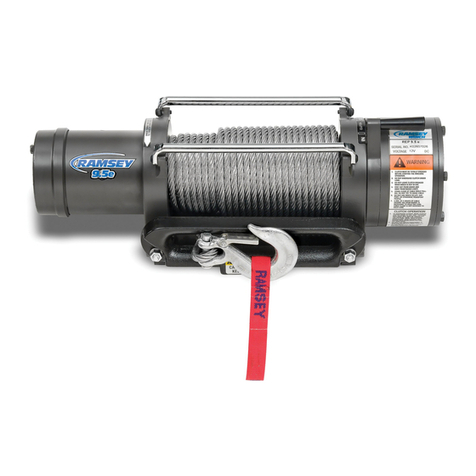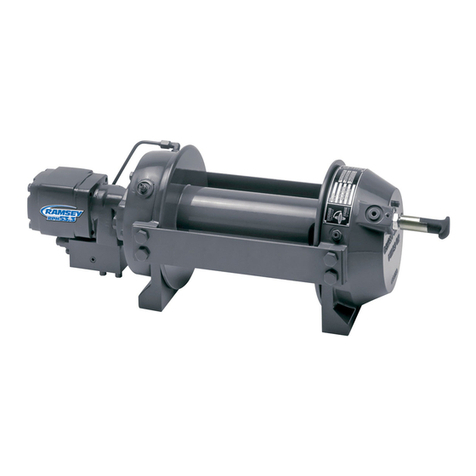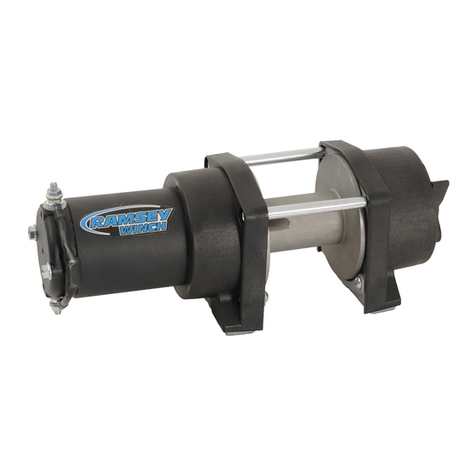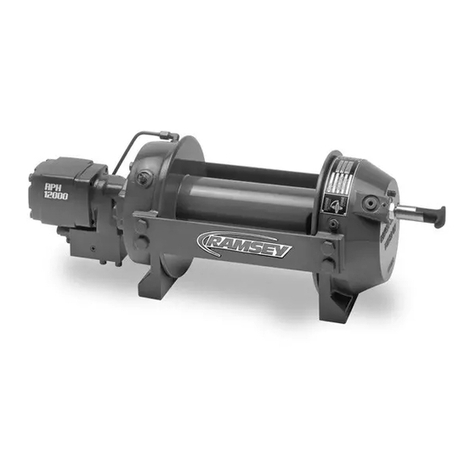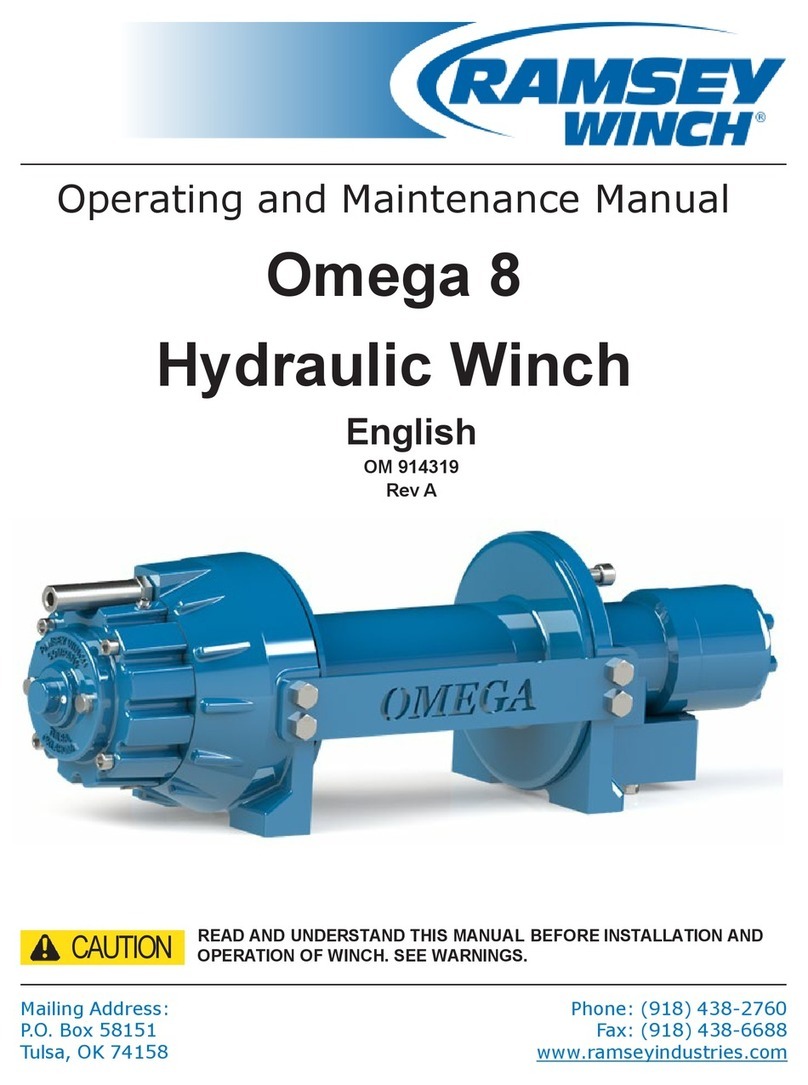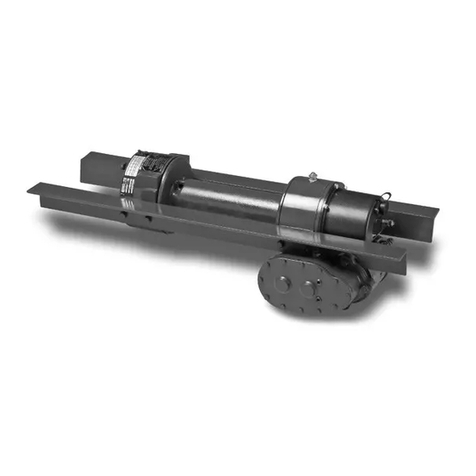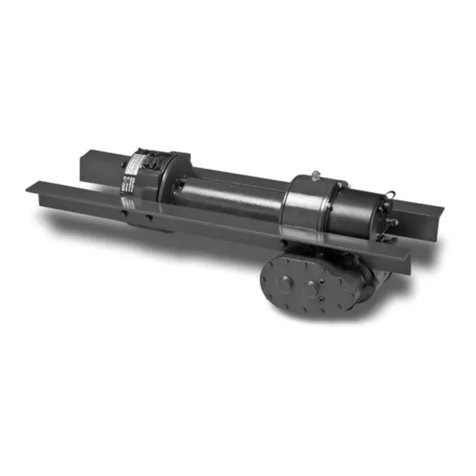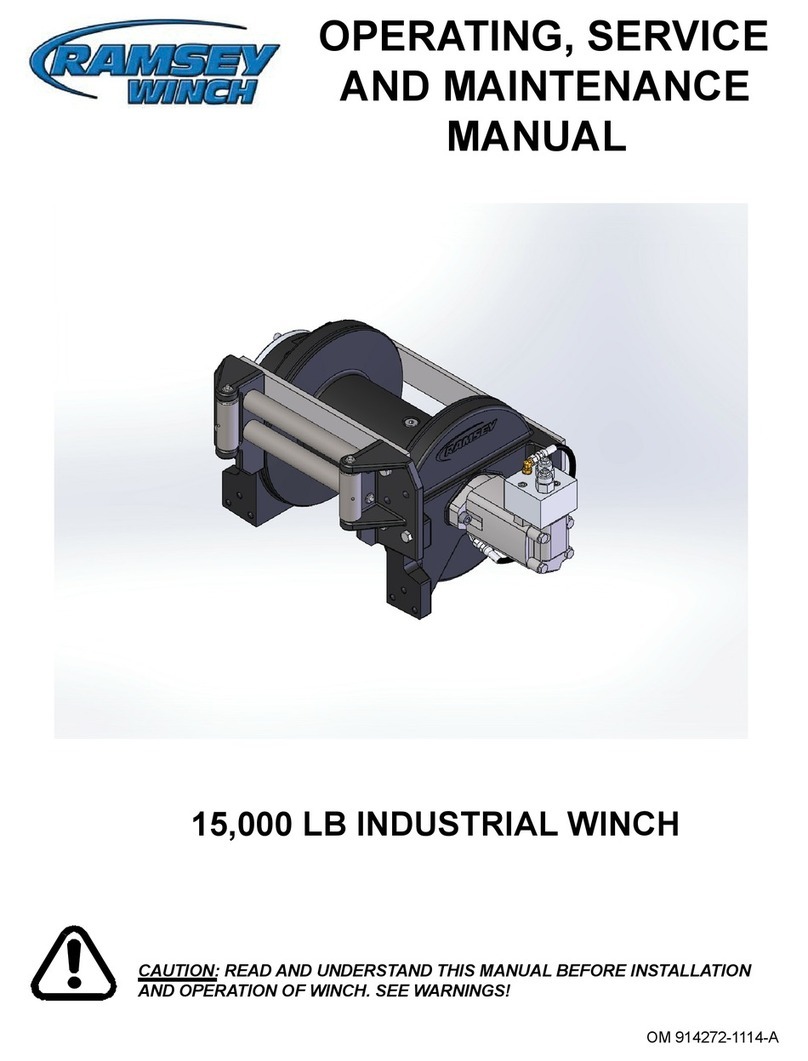
Introduction
Introduction
Please read this manual carefully. This manual contains information to obtain the most efficient
operation from your Ramsey Winch and safety procedures you need to know before operating a
Ramsey Winch. Do not operate this winch until you have carefully read and understand the entire
manual. Ramsey Winches are designed and built to exacting specifications. Great care and skill
go into every winch we make. Refer to the last page for information on the Ramsey Winch
limited warranty. At the time of publishing, this manual is accurate to the best of our
knowledge. Ramsey Winch reserves the right to change any or all items, components and parts,
necessary for any reason. This right does not obligate Ramsey Winch to immediately update the
manual. If in doubt, please call Ramsey Winch for the most up-to-date information.
WARNING
Do not use the winch in hoisting applications due to required hoist safety factors
and features. Do not use the winch to lift, support or otherwise transportpeople
Do not allow personnel under or near the load.
Do not step over or near a cable under a load
Do not exceed the maximum line pull ratings shown in specifications.
Ensure that the clutch is fully engaged before starting the winching operation.
Do not exceed maximum line pull rating shown in tables. Shock loads must not
exceed these ratings.
Use proper personal protective equipment (PPE) including but not limited to
gloves and safety glasses when handling winch cable.
Do not disengage the clutch under load.
When pulling a heavy load, place a blanket, jacket, or tarpaulin over the cable five
or six feet from the hook.
Modification, alteration, or deviation to the winch should only be made by
Ramsey Winch Company.
Do not try to guide the cable during a loaded pull. Keep yourself and others a
safe distance to the side when pulling aload. Do not start the winch motor
before engaging the clutch.
When respooling cable, it is necessary to keep a slight load on the cable. While
wearing proper gloves, pull on the cable as the winch is wound in. Do not allow
the cable to slip through hands.
Do not approach the winch too closely.
Winch clutch should be disengaged when winch is not in use.
A motorspool (open center) directional control valve is required for brake
operation
A minimum of 5 wraps of steel cable around the drum barrel is necessary to hold
the load. Cable clamp setscrew is NOT designed to hold the load.
Do not maintain tension on winch cable during transport. Do not use winch as a
tie down.
CAUTION
Do not move the vehicle to pull load on the winch cable.
Avoid conditions where load shifts or jerks occur, as they may indicate a
dangerous situation
TIPS FOR SAFE OPERATION
Don’t underestimate the potential danger in winching operations.
Observe spooling of cable onto drum.Side pulls can cause cable to pile up at one
end of the drum.To correct uneven stacking, spool out the stacked section of
cable and move it to the other end of the drum and continue winching.Uneven
spooling of the winch cable can damage the winch.
Observe your winch while in use while maintaining asafe distance.
Do not attach tow hooks to winch mounting apparatus.During stationary, double
line pulls, then winch hook should be attached to the chassis of the vehicle.
Since the greatest pulling power is achieved on the innermost layer of the winch,
it is desirable to pull off as much line as possoble for heavy pulls.If necessary, use
asnatch block and double line arrangement.
Tight and neat spooling avoids cable binding.
DO NOT ATTEMPT TO WORK AROUND CABLE UNDER LOAD.
914307 5

